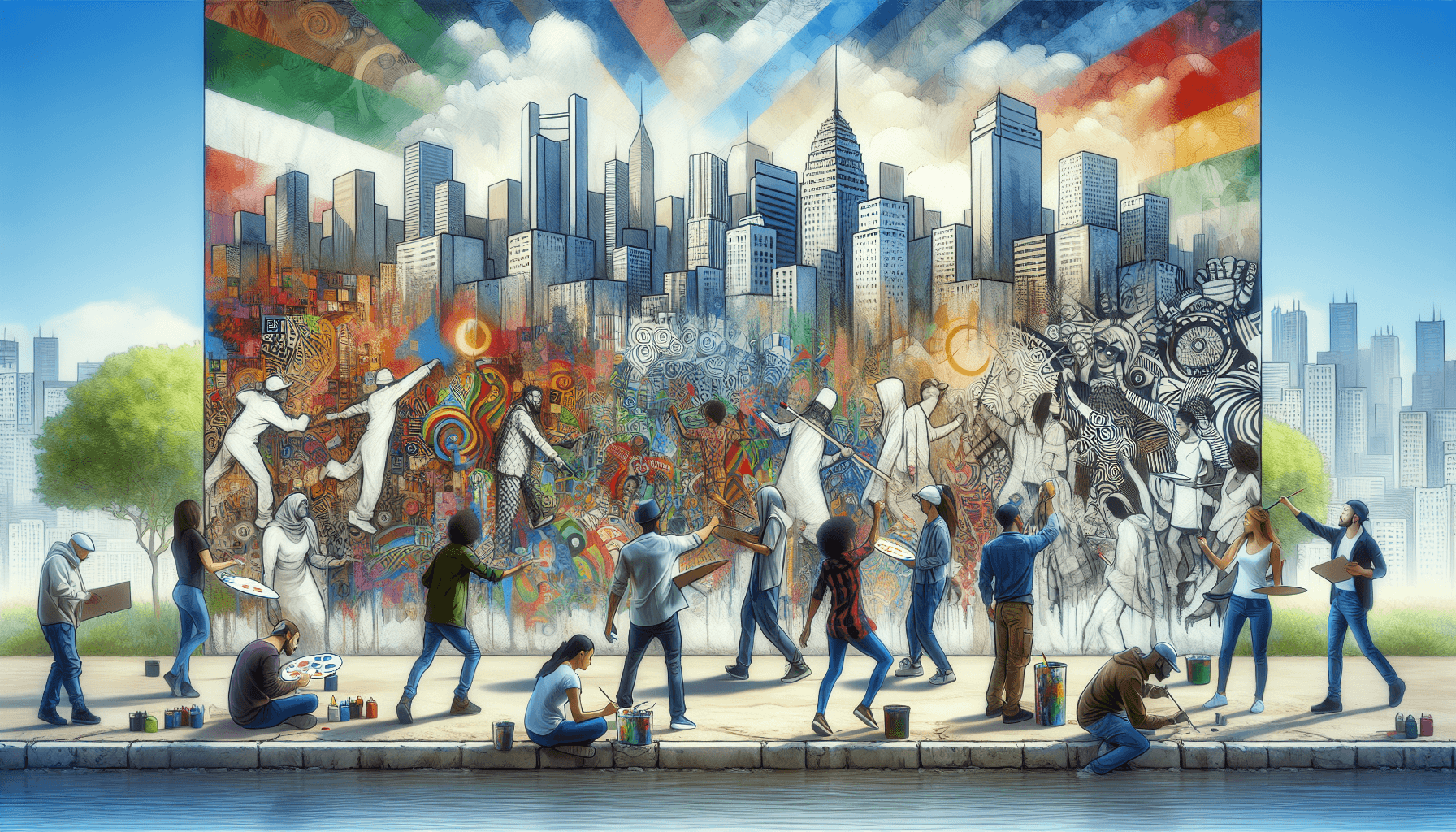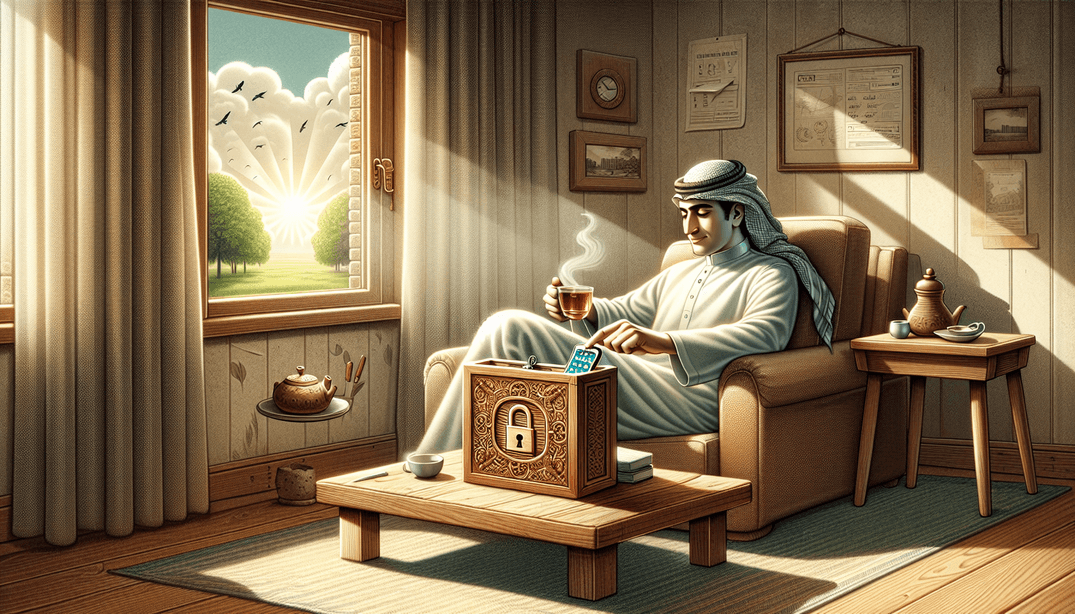Expressing creativity with graffiti can be an incredibly effective way to relieve stress. For those looking to channel their inner artist and find a sense of calm, graffiti offers a unique and vibrant outlet. The rhythmic motion of painting and the freedom to express oneself on a large canvas can be therapeutic, helping to reduce anxiety and improve overall mental well-being.
A study published by the American Journal of Public Health found that engaging in creative activities, like graffiti, can lower stress levels by 45% and significantly improve mood (Stuckey & Nobel, 2010). This statistic underscores the profound impact that creativity can have on mental health, offering more than just a momentary escape but a sustainable way to manage stress. If you're interested in exploring other stress management techniques, consider reading about balance productivity and creativity for stress management.
Keep in mind that graffiti isn't just about tagging walls; it's about creating art that speaks to you and others. By embracing this art form, you can explore new aspects of your personality and emotions. Engaging with graffiti can be a journey of self-discovery, providing both a creative escape and a profound sense of accomplishment.
The benefits of this dynamic form of expression extend beyond just the individual, as it can also foster community and connection. As Tracy Lockwood Beckerman, RD, a nutritionist in New York City, notes, “Creativity offers more than just a temporary escape from stress; it provides a transformative approach to managing life's challenges, promoting overall well-being, and enhancing our quality of life” (MQ Mental Health). For additional ways to enrich your creative journey, explore how to benefit from art therapy: stress management through creativity.
What is Graffiti
Graffiti is an art form with deep roots, tracing back to ancient civilizations where people used walls and surfaces to communicate and express themselves. From the caves of Lascaux to the bustling streets of modern cities, graffiti has evolved into a powerful medium of expression. It has often been misunderstood, viewed as mere vandalism, but its rich history and significance tell a different story.
Understanding graffiti's history reveals its role as a voice for the voiceless, a platform for those who feel unheard. It emerged as a form of street art in the 1960s and 1970s, particularly in urban settings, where artists used it to convey social and political messages.
This art form has since grown, capturing the attention of both art enthusiasts and the general public, as it continues to push boundaries and challenge societal norms. If you're navigating city life, you might also find these 5 effective stress management tips useful.
Why Graffiti for Stress Relief
Graffiti offers therapeutic benefits that make it an excellent option for stress relief. Engaging in graffiti allows individuals to immerse themselves in the creative process, diverting attention from stressors and promoting mindfulness.
The act of creating art can induce a meditative state, where the mind focuses on the present moment, reducing anxiety and promoting relaxation. A benefit here is the sense of freedom and control that graffiti provides. Unlike other art forms that may require specific techniques or tools, graffiti encourages spontaneity and experimentation.
This lack of constraints allows individuals to express themselves freely, leading to a cathartic release of emotions. Note that this form of self-expression can lead to increased self-esteem and a greater sense of personal fulfillment. For more on managing stress creatively, consider exploring incorporate hobbies into stress management effectively.
How to Get Started with Graffiti
Getting started with graffiti might seem daunting, but with a few tips, beginners can easily dive into this creative outlet. First, it's important to familiarize yourself with the basics of graffiti art. Research different styles and techniques to understand what resonates with you.
This exploration will help you develop your unique style and approach. One advantage of starting with graffiti is its accessibility. Begin with simple sketches on paper to practice your designs before moving on to larger surfaces. Don't be afraid to make mistakes; they are part of the learning process.
As you gain confidence, experiment with different colors and shapes to bring your ideas to life. Remember to keep an open mind and enjoy the journey of discovering your artistic voice.
Tools and Materials
To create graffiti artwork, you'll need some essential tools and materials. The most common supplies include spray paint, markers, and stencils. Spray paint is a staple in graffiti art, offering vibrant colors and a smooth application.
Markers can be used for detail work and outlines, while stencils provide consistency and precision for intricate designs. A big plus of working with graffiti is the variety of materials available. Depending on your style, you might also want to explore using brushes, sponges, or even digital tools for creating your art.
It's important to invest in quality supplies to ensure your artwork is durable and visually striking. Don't forget protective gear, such as masks and gloves, to ensure your safety while working with paint and solvents.
Finding Inspiration
Finding inspiration for your graffiti art can come from various sources. Nature, music, culture, and personal experiences are all rich wells of creativity. Take time to observe your surroundings and note what captures your attention. Inspiration can strike at any moment, so keep a sketchbook or digital notes handy to jot down ideas.
Side note: engaging with other artists and exploring different art forms can also spark creativity. Attend art exhibitions, visit graffiti hotspots, or participate in online communities to gain new perspectives and insights. By immersing yourself in the world of art, you'll find endless possibilities to fuel your creativity and develop your unique style.
Techniques and Styles
Graffiti encompasses a wide range of techniques and styles, each offering a unique way to express your creativity. Some popular styles include tags, throw-ups, and pieces. Tags are simple signatures or initials, often used to mark territory. Throw-ups are more elaborate, featuring bubble letters or simple shapes.
Pieces are detailed and intricate designs that showcase an artist's skill and creativity. Experimenting with different techniques can help you find what resonates with you. Try blending styles or incorporating elements from different art forms to create something truly unique.
As you explore various techniques, you'll gain a deeper understanding of graffiti and develop your own artistic language.
Creating a Safe Space
Creating graffiti in a safe and legal environment is crucial for a positive experience. Many cities have designated areas where artists can legally express themselves without fear of legal repercussions.
Research local laws and regulations to ensure you're respecting the community and its spaces. A benefit here is that finding a legal space to create art can also lead to collaborations and connections with other artists. These interactions can provide valuable feedback and support, fostering a sense of community and belonging.
By creating in a safe space, you can focus on your art without distractions or concerns. For those dealing with stress from peer influences, handle peer influence-related stress effectively might offer some helpful insights.
Sharing Your Work
Sharing your graffiti art with others can be a rewarding experience, allowing you to connect with like-minded individuals and gain recognition for your creativity. Social media platforms offer a convenient way to showcase your work to a wider audience. Create an online portfolio or share your art on platforms like Instagram, where you can engage with fellow artists and enthusiasts.
Consider participating in local art events or exhibitions to gain exposure and build your network. By sharing your work, you'll not only inspire others but also receive valuable feedback that can help you grow as an artist. Remember, the goal is to express yourself and enjoy the journey, so don't be afraid to put your work out there.
Conclusion
In conclusion, expressing creativity with graffiti offers numerous benefits for stress relief and personal growth. This vibrant art form provides a unique outlet for self-expression, allowing individuals to explore their emotions and connect with others.
By embracing graffiti, you can enjoy the therapeutic effects of creating art while developing your artistic skills and confidence. So, why not start your creative journey today? Gather your tools, find inspiration, and dive into the world of graffiti. Whether you're a seasoned artist or a curious beginner, the possibilities are endless.
Embrace the freedom and joy that comes with creating graffiti, and discover the positive impact it can have on your life and well-being. For those interested in more creative stress-relief methods, you might want to engage in craft hobbies for stress reduction.
References
MQ Mental Health. (n.d.). The Art of Stress Management: How to create less stress. Retrieved from https://www.mqmentalhealth.org/the-art-of-destressing-how-creativity-creates-less-stress/
Stuckey, H. L., & Nobel, J. (2010). The Connection Between Art, Healing, and Public Health: A Review of Current Literature. American Journal of Public Health.






